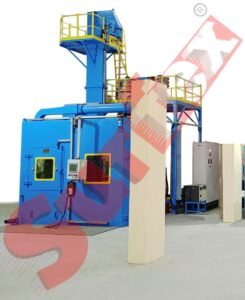Memory architecture has evolved significantly over the last decade, and nowhere is this evolution more important than in server environments where performance, stability, and data integrity directly impact business continuity. One of the most fundamental distinctions in system memory is the difference between Buffered (Registered) RAM, known as RDIMM RAM, commonly used in consumer PCs.
While both UDIMM and RDIMM are forms of DDR memory, they are engineered for entirely different roles. Enterprise servers overwhelmingly depend on RDIMM, and understanding the reasons behind this choice is essential for IT managers, system builders, and organizations planning infrastructure upgrades.
What Is Buffered (Registered) RAM?
Buffered or Registered DIMM (RDIMM) includes an additional component a register chip positioned between the DRAM modules and the memory controller inside the CPU. This register temporarily stores and buffers data signals before forwarding them.
Why the Register Exists
Modern servers often run:
-
6–12 DIMMs per CPU
-
Multiple memory channels
-
High-capacity RAM configurations reaching hundreds of gigabytes or even several terabytes
This places enormous electrical demand on the memory controller. The register reduces this electrical load and ensures each signal is clean and synchronized.
Key Benefits of RDIMM
-
Allows significantly more DIMMs per channel
-
Improves electrical stability at large capacities
-
Minimizes data corruption risk
-
Delivers consistent performance under heavy workloads
-
Enables higher total system memory capacity
This makes RDIMM the default memory standard across enterprise servers, virtualization hosts, and mission-critical systems.
What Is Unbuffered RAM (UDIMM)?
Unbuffered RAM is the standard consumer-grade memory found in desktops, laptops, and consumer workstations. It connects directly to the CPU with no register or buffer IC.
Pros of UDIMM
-
Lower latency
-
Lower cost
-
Ideal for small systems with limited DIMMs
Limitations
Because all signals travel directly between DRAM and the CPU, the memory controller can become unstable when using many DIMMs or high-capacity modules. As a result, UDIMM is typically limited to lower-density memory configurations perfect for consumers but not viable for heavy enterprise workloads.
RDIMM vs UDIMM: Detailed Technical Comparison
1. Architecture
-
RDIMM: Adds a register chip to buffer signals
-
UDIMM: Direct electrical signaling
2. Electrical Load
-
RDIMM: Reduced load; supports denser configurations
-
UDIMM: Higher load; limited scalability
3. Maximum Capacity
-
RDIMM: 512GB to several TB depending on platform
-
UDIMM: Typically 32–128GB
4. Stability
-
RDIMM: Highly stable; ideal for nonstop, 24/7 workloads
-
UDIMM: Stable only in limited, low-DIMM configurations
5. Error Correction
RDIMM modules in servers almost always include ECC (Error-Correcting Code), which automatically fixes single-bit memory errors and prevents data corruption.
UDIMM may or may not support ECC depending on the system.
Why Enterprise Servers Prefer RDIMM
1. RDIMM Enables Massive Scalability
Enterprise software environments including virtualization clusters, databases, analytics nodes, and AI pipelines require large pools of memory. RDIMM makes this possible without compromising reliability.
A single server using RDIMM can reach:
-
512GB
-
1TB
-
2TB+ RAM
depending on CPU architecture (Intel Xeon, AMD EPYC).
UDIMM cannot operate anywhere near these limits.
2. RDIMM Enhances System Stability Under Load
Server workloads are continuous, multithreaded, and resource-heavy. RDIMM’s buffered architecture ensures:
-
Clean, stable signal integrity
-
Less electrical noise
-
Fewer memory-related system crashes
-
More predictable long-term performance
This is essential in environments where downtime is unacceptable.
3. RDIMM Supports ECC for Data Accuracy
Memory errors commonly caused by voltage fluctuations, heat, or electromagnetic interference can corrupt data silently. In databases and scientific workloads, even one flipped bit can create catastrophic inaccuracies.
RDIMM with ECC:
-
Detects and corrects errors in real time
-
Prevents data corruption
-
Improves long-term system reliability
This is why ECC-enabled RDIMM is mandatory in datacenters and enterprise servers.
4. RDIMM Enables Effective Virtualization
Virtualization platforms such as:
-
VMware ESXi
-
Microsoft Hyper-V
-
Proxmox
-
KVM/QEMU
allocate large memory pools across dozens of virtual machines. RDIMM ensures stable and scalable memory allocation so VMs can operate without crashes or memory pressure.
5. RDIMM Is Standardized Across Server Platforms
Leading server platforms including Dell PowerEdge, HPE ProLiant, Lenovo ThinkSystem, and Supermicro are engineered specifically around RDIMM configurations because of its performance predictability and reliability.
Performance Differences: Does RDIMM Slow Down a System?
RDIMM has slightly higher latency (a few nanoseconds) due to the register chip, but in real server workloads, the difference is negligible. In fact, RDIMM often performs better because:
-
It prevents instability when many DIMMs are installed
-
It avoids memory-controller throttling
-
It enables higher bandwidth in multi-channel configurations
The theoretical UDIMM latency advantage is insignificant compared to RDIMM’s real-world consistency.
Compatibility: Can You Mix RDIMM and UDIMM?
No.
RDIMM and UDIMM are electrically incompatible. Systems will not boot if they are mixed.
Even motherboards that support both require one type at a time.
Which Should You Choose?
Choose RDIMM if you are building:
-
Enterprise server
-
Datacenter node
-
AI/ML training system
-
Database server (SQL, Oracle, SAP HANA)
-
Virtualization host
-
HPC or scientific workstation
Choose UDIMM if you are building:
-
Home desktop
-
Gaming PC
-
Small office workstation
-
Laptop (SODIMM version)
Final Verdict
Buffered (Registered) RAM and Unbuffered RAM may seem similar on the surface, but their performance and reliability characteristics differ dramatically. RDIMM provides signal stability, higher capacity, ECC support, and long-term reliability, making it the undisputed standard for enterprise servers.
If your priority is performance under heavy load, zero downtime, and maximum scalability, RDIMM is not just recommended it’s essential.







